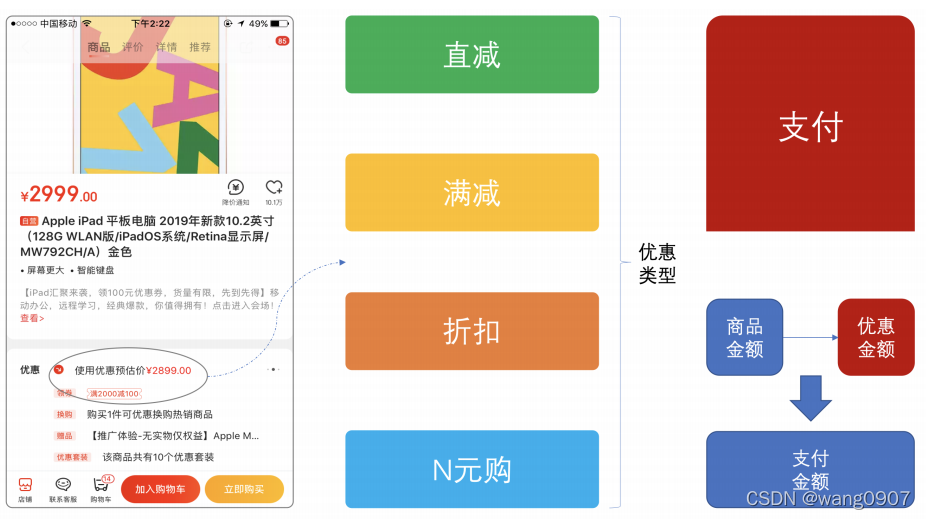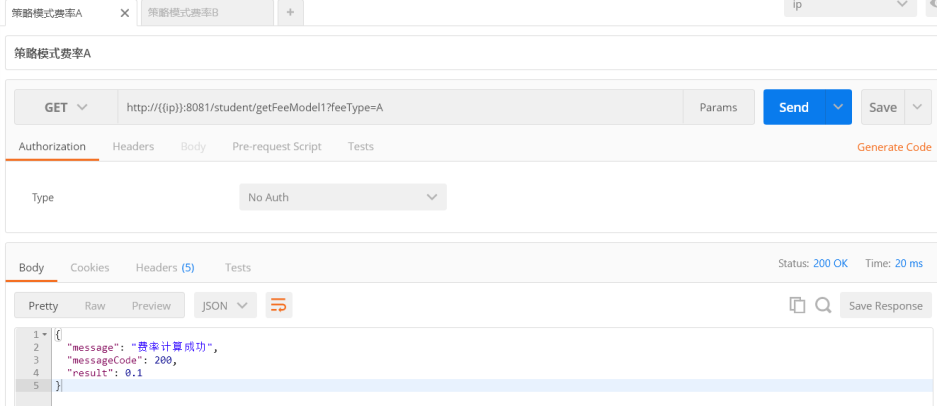徒手撸设计模式-策略模式
2022-07-12 01:33 hikoukay 阅读(35) 评论(0) 收藏 举报概念
https://www.runoob.com/design-pattern/strategy-pattern.html
策略设计模式一般使用的场景是,多种可互相替代的同类行为,在具体的运行过程中根据不同的情况, 选择其中一种行为来执行,比如支付,有微信支付,支付宝支付,银行卡支付,那么到底使用哪种支付方式, 这是由用户来决定的,再比如购物优惠,用户可以选择使用优惠券,可以选择满减优惠,以及其他优惠方式, 到底是使用优惠券,还是满减,或者其他优惠方式,还是由用户来决定,类似的场景我们都可以考虑使用 策略设计模式,可能对于类似的场景我们最常用的还是ifelse,ifelse的缺点是缺少扩展性,从6大原则来说 不符合开闭原则
场景

直减:比如在双十一等时间,商家会选择这种方式进行促销,如原价999的商品,直接降价到899。
满减:一般以券的方式发放给用户,当用户消费金额达到一定数目时,直接使用券来抵扣一定额度的现在,
如图中“满2000减1000”,总价2999,用券后需要2899。
折扣:商家直接打折出售商品,如原价1000元的商品,直接八折出售,实际价格为800元。
N元购:另外一种营销手段,比如1元购1999元的手机,但是并非百分百可购得,而是有一定概率,
类似于买彩票。
写一个对外接口FeeModel
/** * 策略模式接口 */ @Service public interface FeeModel { double calculate(); }
两个策略实现类
FeeModel_A
/** * 策略A */ @Service public class FeeModel_A implements FeeModel { @Override public double calculate() { return 0.1; } }
FeeModel_B
/** * 策略B */ @Service public class FeeModel_B implements FeeModel { @Override public double calculate() { return 0.2; } }
使用策略
@Autowired private ApplicationContext applicationContext; @GetMapping("/getFeeModel1") public ResponseModel getFeeModel1(String feeType) { if (StringUtils.isEmpty(feeType)){ return new ResponseModel("费率类型不能为空", 500, feeType); } FeeModel feeModel = applicationContext.getBean(StFlag.FEE_MODEL + feeType, FeeModel.class); if (!ObjectUtils.isEmpty(feeModel)){ double calculate = feeModel.calculate(); return new ResponseModel("费率计算成功", 200, calculate); } return null; }
测试案例







 浙公网安备 33010602011771号
浙公网安备 33010602011771号